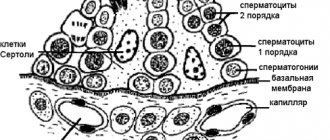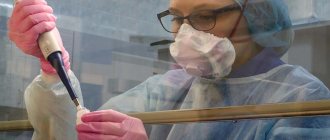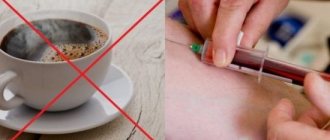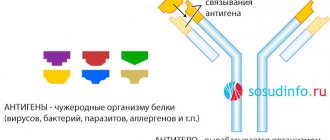Antibodies to double-stranded DNA, anti-dsDNA screen
Antibodies to double-stranded DNA, anti-ds DNA screen
- These are antibodies from the group of antinuclear antibodies. They are a highly specific marker of systemic lupus erythematosus. Antibodies to double-stranded DNA are included in one of the 11 criteria for systemic lupus erythematosus. These antibodies are specific for systemic lupus erythematosus (SLE) and can be detected in approximately 40–70% of active patients. They are found in lower concentrations in other diffuse connective tissue diseases or drug-induced SLE.
It is assumed that anti-ds DNA IgG antibodies are directly involved in the pathogenesis of the development of vasculitis and lupus nephritis.
Antibodies to double-stranded DNA and levels of C3 and C4 in lupus glomerulonephritis
The serum concentration of antibodies to double-stranded DNA in SLE has a positive correlation with the severity of the disease; with effective and successful therapy, their concentration decreases. Monthly monitoring of the concentration of antibodies to 2-stranded DNA allows predicting relapse of the disease. Detection of an increased titer of antibodies to double-stranded DNA and a decrease in C3 and C4 complement components are irreplaceable studies that identify the category of SLE patients with a high risk of developing lupus glomerulonephritis. There is a direct correlation between an increase in the titer of antibodies to double-stranded DNA, a decrease in the C3 and C4 complement components and the severity of lupus glomerulonephritis. A negative test result does not always rule out the disease.
In isolated cases (less than 2%), low concentrations of anti-ds DNA IgG antibodies can be observed in people without any clinical symptoms of an autoimmune disease.
P rendering
Diagnosis and monitoring of the course of systemic lupus erythematosus (SLE).
Preparation
It is recommended to donate blood in the morning, between 8 am and 12 pm. Blood is taken on an empty stomach or 4–6 hours after the last meal. It is allowed to drink water without gas and sugar. On the eve of the examination, food overload should be avoided.
Interpretation of results
Units of measurement: IU/ml.
Reference values:
- <20 IU/ml (negative);
- 20–25 IU/ml (doubtful);
- > 25 IU/ml (positive).
Level up:
- systemic lupus erythematosus (SLE);
- rheumatoid arthritis;
- Sjögren's syndrome;
- scleroderma;
- chronic active hepatitis;
- biliary cirrhosis;
- Epstein-Barr virus infection and cytomegalovirus infection.
What do the results of IgM, IgG to SARS-CoV-2 mean? How to understand them?
coronavirus
covid 19
SARS-CoV-2
antibodies to coronavirus
IgM and IgG antibodies
11176 15 September
IMPORTANT!
The information in this section cannot be used for self-diagnosis and self-treatment.
In case of pain or other exacerbation of the disease, diagnostic tests should be prescribed only by the attending physician. To make a diagnosis and properly prescribe treatment, you should contact your doctor. If the patient donated blood for immunoglobulins M and G to SARS-CoV-2, then the main options/combinations of the results obtained:
- Positive IgM, negative IgG
- Positive M and G
- Negative IgM, positive IgG
- Negative IgM and IgG
Before deciphering these options, I would like to dwell on an important term that will be used in the text. “Infectious process” is the interaction of the human body and a pathogenic microorganism, the entire set of physiological and pathological processes occurring in our body, from the moment of infection to sanitation from the pathogen. A disease is a private, extreme manifestation of an infectious process, characterized, in particular, by the appearance of clinical symptoms. The infectious process does not always “result” into illness. Understanding this is especially relevant during the COVID-19 pandemic to explain the commonly used term “asymptomatic carriers.” Such patients are not clinically ill, but epidemiologically they can be dangerous to others. Never before, in any infectious disease, in any epidemic (pandemic) in the world, have such a number of clinically healthy carriers been identified.
Why is this clarification necessary? So that there is a clear understanding that a person with ANY positive Ig results for SARS-CoV-2:
- I have encountered this virus
- But this does not always mean that he has had COVID-19. It is possible that he was an “asymptomatic carrier.” Accordingly: the term “been ill” when interpreting positive antibody results without knowledge of the anamnesis and clinical picture is incorrect.
So, here are the options for the results obtained.
Option 1: acute infectious process. The duration of infection is approximately 1-3 weeks from the moment of infection.
Option 2: an infectious process lasting from 3 to 8-10 weeks from the moment of infection.
Option 3: the approximate duration of contact with SARS-CoV-2 is more than 10-12 weeks.
Option 4: either the patient who received this result has not encountered SARS-CoV-2, or the contact was very recent, up to a week from the time of the examination.
These are the most common and typical combinations of IgM and G results. It is also possible to obtain a “doubtful” result from one of the tests. What is a “questionable result”?
This is the value obtained from a specific patient analysis, which does not allow this result to be interpreted as “positive” or “negative”. Most often, this result is possible with a low level of antibodies, which is typical, for example, in the early stages of the disease. In this case, it is necessary to retake this analysis after 10-14 days to assess the dynamics. There are also possible medical conditions in which the level of ANY antibodies can be reduced (oncological diseases, immunosuppressive therapy, immunodeficiencies and others).
How the level of antibodies changes and about “memory cells” will be discussed in the following publications.
A.S. Pozdnyakov, Ph.D., infectious disease specialist, chief physician of Invitro-Siberia LLC
Tests to detect antibodies in the body
ANA OR ANTI-CYTOPLASMIC ANTIBODIES
- Systemic connective tissue lesions:
- systemic lupus erythematosus (SLE), - rheumatoid arthritis, - Sjogren's syndrome, - scleroderma, - dermatomyositis, - periarteritis nodosa, etc.;
- Infections (tuberculosis, infectious mononucleosis, acute and especially chronic viral hepatitis, subacute infective endocarditis, HIV infection, etc.);
- Chronic autoimmune hepatitis, primary biliary cirrhosis of the liver;
- Diabetes mellitus (insulin dependent);
- Multiple sclerosis;
- Pulmonary fibrosis;
- Systemic vasculitis.
Antinuclear antibodies can also be detected in acute and chronic leukemia, acquired hemolytic anemia, Waldenström's disease, malaria, chronic renal failure, thrombocytopenia, lymphoproliferative diseases, myasthenia gravis and thymomas. Antinuclear antibody titers in periarteritis nodosa can reach 1:100, in dermatomyositis - 1:500, in SLE - 1:1000 and higher. In SLE, a test for detecting antinuclear antibodies using indirect immunofluorescence has a high degree of sensitivity (up to 98% according to various authors), but moderate specificity (78%), since antinuclear antibodies can also occur in other diseases mentioned above. For comparison, the test for determining antibodies to native DNA using ELISA in the diagnosis of SLE has a significantly lower sensitivity - 38% (since not only antibodies to DNA, but also antibodies to histones, deoxyribonucleoprotein and many others can play a pathogenetic role in the development of SLE nuclear antigens); however, the specificity of anti-native DNA antibodies for the diagnosis of SLE is almost absolute (98%). The clinical interpretation of these differences in the sensitivity and specificity of different laboratory tests in the diagnosis of SLE is as follows: a negative result of detection of antibodies to native DNA using ELISA does not exclude the diagnosis of SLE, but the detection of these antibodies confirms the diagnosis with almost 100% probability. There is a different situation with regard to ANF: a negative (especially multiple) result of detection of antinuclear antibodies by indirect immunofluorescence makes the diagnosis of SLE (at least the active form) very doubtful (since the method detects almost all autoantibodies found in SLE), but the detection antinuclear antibodies will not always be a sufficient basis for making a diagnosis of SLE; it confirms the presence of the phenomenon of autoimmunity and usually requires further clinical and laboratory differentiation to establish a final diagnosis, taking into account the type of luminescence, antibody titer, additional clarifying or confirmatory tests recommended by the laboratory, comparison of results with clinical picture. In SLE, there is usually no correlation between ANA titres and clinical status, although persistence of high titers over a long period of time is an unfavorable prognostic sign. A decrease in the level of antibodies portends remission, but sometimes death (the phenomenon of antibody consumption: with increasing autoimmune tissue damage, the rate of release of nuclear antigens, to which accumulated antinuclear antibodies bind, exceeds the rate of synthesis of new autoantibodies). In scleroderma, the frequency of detection of antibodies to nuclear antigens is 60-80%, their titer is usually lower than in SLE. In rheumatoid arthritis, SLE-like forms of the course often occur, so ANAs are detected quite often. With dermatomyositis, antibodies to nuclear antigens in the blood occur in 20-60% of cases, with periarteritis nodosa - in 17% (titer up to 1:100), with Sjögren's disease - in 56% in combination with arthritis and in 88% of cases - in combination with Gougerot-Sjögren syndrome. In discoid (cutaneous) lupus erythematosus, antinuclear factor is detected in 50% of patients. Frequency of detection of antinuclear antibodies in rheumatic diseases and in healthy individuals (Nasonova V.A. et al., 1997)
| Disease | ANA detection rate, % | Captions |
| SLE - active form | 98-100 | +++ |
| Discoid lupus erythematosus | 40 | ++, +++ |
| Drug-induced lupus | 100 | ++ |
| Systemic scleroderma | 70 | ++, +++ |
| Sjögren's syndrome | 60 | ++, +++ |
| Mixed connective tissue disease | 100 | ++, +++ |
| Raynaud's disease | 60 | ++, +++ |
| Rheumatoid arthritis | 40 | +, ++ |
| Juvenile chronic arthritis | 20 | +, ++ |
| Polymyositis and dermatomyositis | 30 | + |
| Periarteritis nodosa | 17 | + |
| Healthy individuals under 40 years of age | 3 | + |
| Healthy faces after 40 years | 25 | + |
Antibodies to nuclear antigens (ANA), screening
Antibodies to nuclear antigens (ANA) are a heterogeneous group of autoantibodies directed against components of the body's own nuclei. They are a marker of autoimmune diseases and are determined for their diagnosis, assessment of activity and monitoring of their treatment.
Synonyms Russian
Antinuclear antibodies, antinuclear antibodies, antinuclear factor, ANF.
English synonyms
Antinuclear Antibody, ANA, Fluorescent Antinuclear Antibody, FANA, Antinuclear factor, ANF.
Research method
Enzyme-linked immunosorbent assay (ELISA).
What biomaterial can be used for research?
Venous blood.
How to properly prepare for research?
Do not smoke for 30 minutes before donating blood.
General information about the study
Antibodies to nuclear antigens (ANA) are a heterogeneous group of autoantibodies directed against components of the body's own nuclei. They are detected in the blood of patients with a variety of autoimmune diseases, such as systemic connective tissue diseases, autoimmune pancreatitis and primary biliary cirrhosis, as well as some malignancies. The ANA study is used as a screening for autoimmune diseases in a patient with clinical signs of an autoimmune process (prolonged fever of unknown origin, articular syndrome, skin rashes, weakness, etc.). Such patients, if the test result is positive, require further laboratory evaluation, including tests more specific for each autoimmune disease (for example, anti-Scl-70 for suspected systemic scleroderma, anti-mitochondrial antibodies for suspected primary biliary cirrhosis). It should be noted that a negative ANA test result does not exclude the presence of an autoimmune disease.
ANAs are most common in patients with systemic lupus erythematosus (SLE). They are found in 98% of patients with it, which allows us to consider this study as the main test for diagnosing SLE. The high sensitivity of ANA for SLE means that repeated negative results make the diagnosis of SLE questionable. However, the absence of ANA does not completely exclude the disease. In a small proportion of patients, ANAs are absent at the onset of SLE symptoms but occur during the first year of the disease. In 2% of patients, antibodies to nuclear antigens are never detected. If the test result is negative in a patient with symptoms of SLE, it is advisable to perform more SLE-specific laboratory tests, primarily anti-double-stranded DNA antibodies (anti-dsDNA). Detection of anti-dsDNA in a patient with clinical signs of SLE is interpreted in favor of the diagnosis of SLE, even in the absence of ANA.
SLE occurs as a result of a complex of immunological disorders that develop over a long period of time. The degree of imbalance of the immune system gradually increases over the course of the disease, which is reflected in an increase in the spectrum of autoantibodies. The first stage of the autoimmune process is characterized by the presence of genetic features of the immune response (for example, certain major histocompatibility complex, HLA alleles) in the absence of laboratory testing abnormalities. At the second stage, autoantibodies can be detected in the blood, but there are no clinical signs of SLE. Antibodies to nuclear antigens, as well as anti-Ro-, anti-La-, antiphospholipid antibodies are most often detected at this stage. Detection of ANA is associated with a 40-fold increase in the risk of SLE. The period between the onset of ANA and the development of clinical symptoms varies, averaging 3.3 years. Patients with a positive ANA test result are at risk for developing SLE and require periodic follow-up with a rheumatologist and laboratory testing. The third stage of the autoimmune process is characterized by the appearance of symptoms of the disease, while the widest range of autoantibodies can be detected in the blood, including anti-Sm antibodies, antibodies to double-stranded DNA and ribonucleoprotein. Thus, to obtain complete information about the degree of immunological disorders in SLE, the ANA test must be supplemented with an analysis for other autoantibodies.
The course of SLE varies from persistent remission to fulminant lupus nephritis. To predict the disease, assess its activity and the effectiveness of treatment, various clinical and laboratory criteria are used. Since none of the tests can clearly predict exacerbation or damage to internal organs, monitoring of SLE is always a comprehensive assessment, including the study of ANA, as well as other autoantibodies and some general clinical indicators. In practice, the doctor independently determines a set of tests that most accurately reflect how the course of the disease changes in each patient.
Drug-induced lupus represents a special clinical syndrome. It develops while taking certain medications (most often procainamide, hydralazine, some ACE inhibitors and beta blockers, isoniazid, minocycline, sulfasalazine, hydrochlorothiazide, etc.) and is characterized by symptoms reminiscent of SLE. ANA can also be detected in the blood of most patients with drug-induced lupus. If there are symptoms of an autoimmune process in a patient taking these drugs, an ANA test is recommended to rule out drug-induced lupus. The peculiarity of drug-induced lupus is the disappearance of immunological disorders and symptoms of the disease after complete discontinuation of the drug - at this time, a control ANA study is recommended, and a negative result confirms the diagnosis of drug-induced lupus.
ANAs are detected in 3-5% of healthy people (in the group of patients over 65 years of age, this figure can reach 10-37%). A positive result in a patient without symptoms of an autoimmune process must be interpreted taking into account additional anamnestic, clinical and laboratory data.
What is the research used for?
- For screening autoimmune diseases such as systemic connective tissue diseases, autoimmune hepatitis, primary biliary cirrhosis, etc.
- For diagnosing systemic lupus erythematosus, assessing its activity, making a prognosis and monitoring its treatment.
- For the diagnosis of drug-induced lupus.
When is the study scheduled?
- For symptoms of an autoimmune process: prolonged fever of unknown origin, joint pain, skin rash, unmotivated fatigue, etc.
- For symptoms of systemic lupus erythematosus (fever, skin lesions), arthralgia/arthritis, pneumonitis, pericarditis, epilepsy, kidney damage.
- Every 6 months or more frequently when evaluating a patient diagnosed with SLE.
- When prescribing procainamide, disopyramide, propafenone, hydralazine and other drugs associated with the development of drug-induced lupus.
What do the results mean?
Reference values: negative.
Reasons for the positive result:
- systemic lupus erythematosus;
- autoimmune pancreatitis;
- autoimmune thyroid diseases;
- malignant neoplasms of the liver and lungs;
- polymyositis/dermatomyositis;
- autoimmune hepatitis;
- mixed connective tissue disease;
- myasthenia gravis;
- diffuse interstitial fibrosis;
- Raynaud's syndrome;
- rheumatoid arthritis;
- systemic scleroderma;
- Sjögren's syndrome;
- taking medications such as procainamide, disopyramide, propafenone, some ACE inhibitors, beta blockers, hydralazine, propylthiouracil, chlorpromazine, lithium, carbamazepine, phenytoin, isoniazid, minocycline, hydrochlorothiazide, lovastatin, simvastatin.
Reasons for negative results:
- norm;
- incorrect collection of biomaterial for research.
What can influence the result?
- Uremia may lead to a false negative result.
- Many drugs are associated with the development of drug-induced lupus and the appearance of ANA in the blood.
Important Notes
- A negative result in a patient with signs of an autoimmune process does not exclude the presence of an autoimmune disease.
- ANAs are detected in 3-5% of healthy people (10-37% over the age of 65 years).
- A positive result in a patient without symptoms of an autoimmune process must be interpreted taking into account additional anamnestic, clinical and laboratory data (the risk of SLE in such patients is increased 40 times).
Also recommended
- Complete blood count (without leukocyte formula and ESR)
- Leukocyte formula
- General urine analysis with sediment microscopy
- Serum creatinine
- Serum albumin
- Complement component C3
- Alanine aminotransferase (ALT)
- Aspartate aminotransferase (AST)
- Total bilirubin
- Screening for connective tissue diseases
- Antibodies to extractable nuclear antigen (ENA screen)
- Antinuclear antibodies (anti-Sm, RNP, SS-A, SS-B, Scl-70, PM-Scl, PCNA, CENT-B, Jo-1, histones, nucleosomes, Ribo P, AMA-M2), immunoblot
- Anti-double-stranded DNA (anti-dsDNA) screening
- Diagnosis of systemic lupus erythematosus
- Antiphospholipid IgG antibodies
- Antiphospholipid antibodies IgM
- Diagnosis of antiphospholipid syndrome (APS)
Who orders the study?
Rheumatologist, dermatovenerologist, nephrologist, pediatrician, general practitioner.
Literature
- Arbuckle MR, McClain MT, Rubertone MV, Scofield RH, Dennis GJ, James JA, Harley JB. Development of autoantibodies before the clinical onset of systemic lupus erythematosus. N Engl J Med. 2003 Oct 16;349(16):1526-33.
- Bizzaro N, Tozzoli R, Shoenfeld Y. Are we at a stage to predict autoimmune rheumatic diseases? Arthritis Rheum. 2007 Jun;56(6):1736-44.
- Guidelines for referral and management of systemic lupus erythematosus in adults. American College of Rheumatology Ad Hoc Committee on Systemic Lupus Erythematosus Guidelines. Arthritis Rheum. 1999 Sep;42(9):1785-96.
- Fauci et al. Harrison's Principles of Internal Medicine/A. Fauci, D. Kasper, D. Longo, E. Braunwald, S. Hauser, J. L. Jameson, J. Loscalzo; 17 ed. – The McGraw-Hill Companies, 2008.






